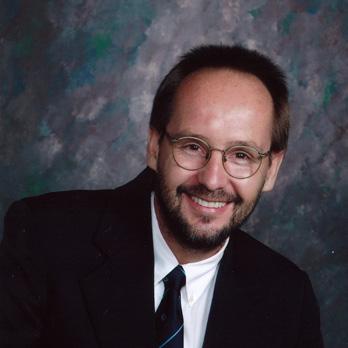
3 minute read
From Braces to Bytes: The Role of Technology in Modern Orthodontics
by Vernon Kruger, Orthodontic Clinician, New Zealand
Dr Vernon Kruger is a registered dentist who has been practicing the art and science of orthodontics for over 40 years, both locally in New Zealand and internationally. He is one of the top 1% of Invisalign providers of more than 100,000 skilled doctors globally. He is also a Certified Senior Instructor at the International Association for Orthodontics with Fellow status membership. Dr Kruger has a holistic philosophy of True Alignment Airway Orthodontics, which emphasizes jaw positioning and size, as well as the improvement of airways, to address the cause of orthodontic issues. He has lectured internationally and in New Zealand frequently, and he provides consulting, training and keynote speaker services to other orthodontic practitioners.
Advertisement

Introduction
Orthodontic treatment has been around for centuries, with ancient civilizations using various methods to straighten teeth. Today, digital technology is transforming the field, offering significant advantages in precision, efficiency, and patient experience. Clear aligners have emerged as a revolutionary option in orthodontics, offering advantages such as improved patient comfort and aesthetics. Digital technology has also enabled orthodontic clinicians to provide personalized and precise treatment plans for their patients. However, adopting these innovations requires overcoming challenges related to cost, learning curves, and patient acceptance. This paper explores the transformative impact of digital technology on modern orthodontics and highlights the opportunities and challenges it presents. It also emphasizes the importance of comprehensive training programs, effective patient education, data security, and interdisciplinary collaboration in maximizing the benefits of digital technology and shaping the future of orthodontics.
Ancient Pioneers: Explorations in Dental Improvement
The origins of orthodontics can be traced back to ancient Egypt and Greece, where remarkable advances in dental care occurred between 400 and 300 B.C. In ancient Egypt, the pursuit of dental perfection manifested itself in the ingenious use of catgut, a natural fiber, to bond teeth together. This early form of dental braces aimed to correct misalignments and stabilize teeth, demonstrating the Egyptians’ early understanding of the aesthetics and function of dental health.1,2
Across the Mediterranean, the ancient Greeks embarked on their own investigation into dental advancement. Renowned figures such as Hippocrates, the father of medicine, and Aristotle, the renowned philosopher, contributed to the expanding corpus of dental care knowledge. Their unrelenting pursuit of knowledge led to the invention of numerous techniques, each contributing to the evolution of the art and science of orthodontics.1,2
Etruscans and Romans: Dental Alignment Masters
Preceding the Romans, the Etruscans left an intriguing legacy in the field of orthodontics. They created intricate mouthguards that preserved the position of the teeth out of a profound sense of devotion to keeping their deceased loved ones’ dental alignment in place, showcasing their creativity and commitment to dental aesthetics even after death.3
During their time, the Romans, renowned for their architectural prowess and inventiveness, made significant advances in orthodontics. They pioneered the use of golden wires to stabilize misaligned teeth, exemplifying their commitment to dental refinement and functional harmony.1
Recent Times
For centuries, traditional braces have dominated the field of orthodontics as the treatment of choice, playing
*This article has been peer reviewed an irreplaceable role in correcting dental misalignments and malocclusions and effectively restoring the form and function of numerous smiles.3
The history of orthodontic treatment is intricately intertwined with the development of dental science. In the early eighteenth century, French dentist Pierre Fauchard introduced an extraordinary invention known as the bandeau, a metal device in the shape of a horseshoe intended to expand the dental arch. This invention ushered in a new era, introducing an abundance of orthodontic possibilities.2,3
In the mid-19th century, the spotlight shifted to Edward Maynard, a notable figure who made pioneering contributions to the field of braces. Maynard’s introduction of the first rubber bands designed specifically for orthodontic use transformed the field, providing a versatile solution to a variety of orthodontic challenges.2,3
Orthodontic advancement continued with the invention of the wire crib in the early 20th century. This meticulously designed device played a crucial role in rectifying overbites and underbites, ushering in a new era in orthodontics and providing orthodontic clinicians with a game-changing instrument for restoring harmonious dental alignment.3
Edward H. Angle’s formulation of the “ribbon arch” technique in the early 1900s marked a significant advancement in the field. Using brackets and archwires, this technique effectively moved teeth into their correct positions. Since then, orthodontic brackets and archwires have undergone numerous developments and improvements, enhancing the precision and effectiveness of treatment.3
This innovation revolutionized orthodontic treatment, presenting a robust and resilient alternative to previous techniques. The harmonious operation of brackets and archwires demonstrated the mastery of orthodontics.
One name stands out in this tapestry of progress: Edward Angle, an eminent figure who revolutionized the foundations of orthodontics. Edward Angle’s inventive use of brackets and unwavering opposition to extraction orthodontics cemented his place in dental history.3
As we reflect on this magnificent journey through time, we bear witness to the evolution of braces—an awe-inspiring odyssey intertwining scientific advances, innovation, and unwavering commitment. From the humble beginnings of the bandeau to the miracles of stainless steel, braces have emerged as beacons of










